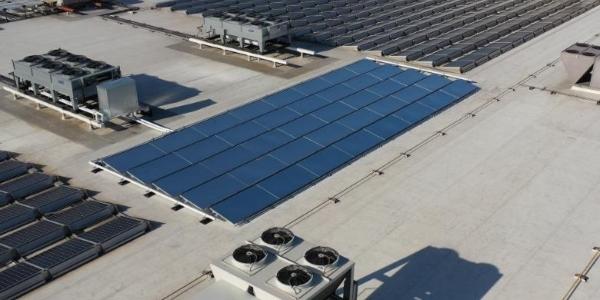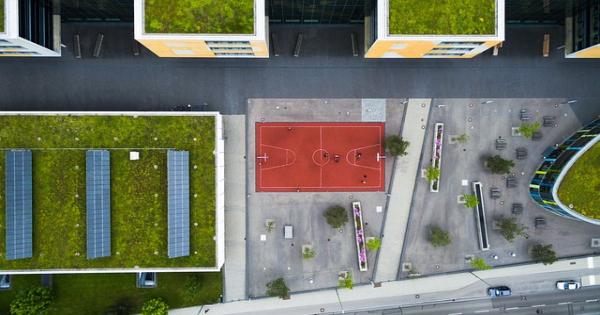Air Conditioners for the Age of Climate Change

By Cass Jacoby, RCS Reporter.
Scientists leverage radiative cooling to naturally reduce the amount of electricity and greenhouse gasses emitted through air conditioning.
This year record temperatures hit the U.S. As the planet warms, and as climate change gets more severe, more people will be looking to beat the heat. As it gets hotter, air conditioners and refrigeration systems need more and more electricity to run and electrical reliability to operate these systems will become a significant challenge.
IEA reports that air conditioning accounts for 10% of all global electricity consumption and the demand for this type of cooling is expected to triple by 2050, which could strain already overworked electric grids. Further, air conditioners can make our problems worse, as they emit greenhouse gases that contribute heavily to climate change.
One company, SkyCool, has made it its mission to make existing cooling systems run more efficiently by taking advantage of a phenomenon that exists in nature.
All objects give off heat in the form of invisible infrared radiation; as heat leaves an object it becomes cooler — a process known as radiative cooling. "Our planet naturally cools itself by sending heat out in the form of infrared light or radiation," SkyCool's cofounder and CEO Eli Goldstein told CNN.
Essentially, SkyCool technology mimics this way the planet cools itself, designing a new material with radiative cooling properties that work 24 hours a day. Rooftop panels with an optical film in them radiate infrared light and cools themselves in the process. Using modern nanotechnology, the film has hundreds of tiny optical layers designed to emit specific wavelengths of radiation that maximize cooling but is also highly reflective, absorbing little energy so it stays cool even under the sun.
They look like solar panels, but work in the opposite way. Rather than absorbing sunlight, these panels reflect 97% of the sunlight that hits them and cools the surface below, according to the company. They estimate that a SkyCool panel saves two to three times as much energy as a solar panel generates given the same area.
SkyCool's model embeds a network of pipes below these panels that are filled with water, that then flows into a refrigeration or air conditioning system. Through this process pressure is taken off of the system's cooling mechanism, because the panels can cool naturally and don't need external power to function.
Scientists have been researching the benefits of radiative cooling for years and just this year a number of solutions and models to harness the process have been proposed. Yet, scientists run into the same challenges familiar to the solar panel industry: this technology doesn't work as well without sunlight.
"Our technology works best in hot, dry climates where the sky is clear, so when you have clouds, that blocks that radiative cooling window," Eli tells CNN. "In the same way that [carbon dioxide] blocks light and sort of has that heat trapping effect, water vapor also will block infrared light."
Plus, there is always the obstacle of cost. "New technologies like radiative cooling are often more expensive," Eli says. "People are very sensitive to first cost, and so that is another barrier to getting new things out there."
This technology is relatively expensive, most radiative cooling technologies "suffer from a high manufacturing cost and large-scale production limits," researchers at China's Fudan University wrote in a paper published in the journal Nature.
However, there is hope that the cost could come down by scaling up production, particularly in countries like Asia or Africa where this technology can really make a difference. Eli tells CNN "We're just excited to be able to use this new technology for good.”
Stay up to date with the latest roofing industry news when you sign up for the RCS Week in Roofing e-news.
Photo credit: CNN





















Comments
Leave a Reply
Have an account? Login to leave a comment!
Sign In